Tech
6 best tools for AI product photography in 2025: Testing and feature breakdown
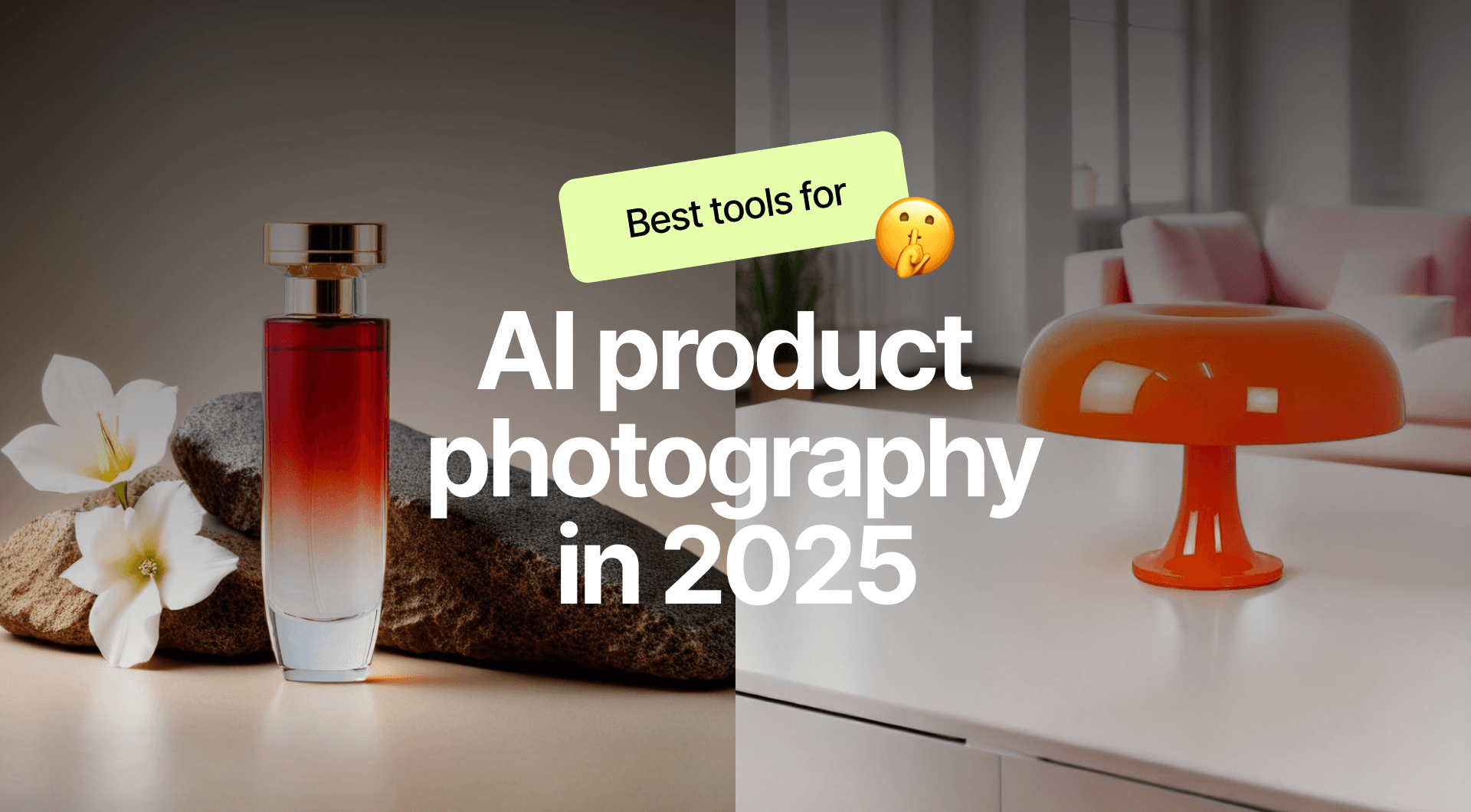
We've tested and compared the best AI product photography tools for 2025. Discover how these apps can help you generate backgrounds, enhance image quality, and streamline your eCommerce workflow.

Takeaways
- Claid.ai (from $15/mo) offers a full suite of tools to enhance, generate, and edit product photos. It excels at placing products in new settings realistically.
- Adobe Firefly (from $5/mo) struggles with product-specific tasks but provides extensive customization.
- Photoroom ($12.99/mo) shines with its mobile app, making it ideal for on-the-go eCommerce sellers.
- Pebblely (from $19/mo) offers user-friendly bulk processing and 40+ pre-made themes.
- Flair.ai ($10/mo) offers a design studio feel. You can add 3D objects and human models to your photos.
- For the best results, don't just rely on AI. Add your own creative touch, keep your brand style consistent, and double-check the AI's work for quality.
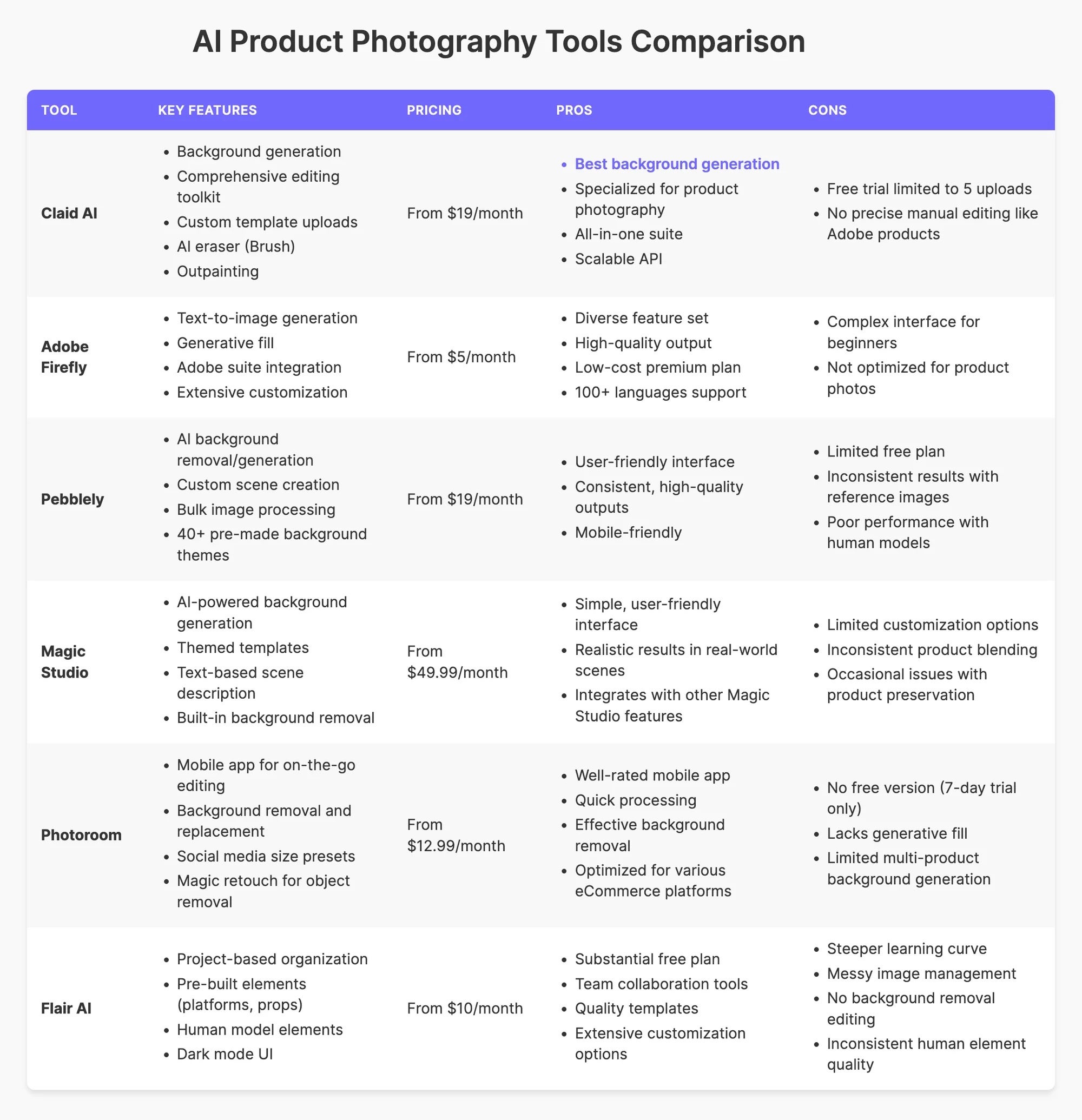
Top AI tools for product photography in 2025
We'll compare leading AI product photography tools, focusing on their features, ease of use, and performance. Key factors include: background generation, image quality, product preservation and blending, customization options, ease of use, and pricing. For each tool, we'll show AI-generated product photos and rate their capabilities.
Let's explore these tools that are changing product photography.
Claid.ai
For a powerful all-in-one product photo editing tool, Claid.ai is tough to beat. It handles background removal and image enhancements, but its standout feature is the AI background generator. Describe the setting you want, and your product appears there instantly.
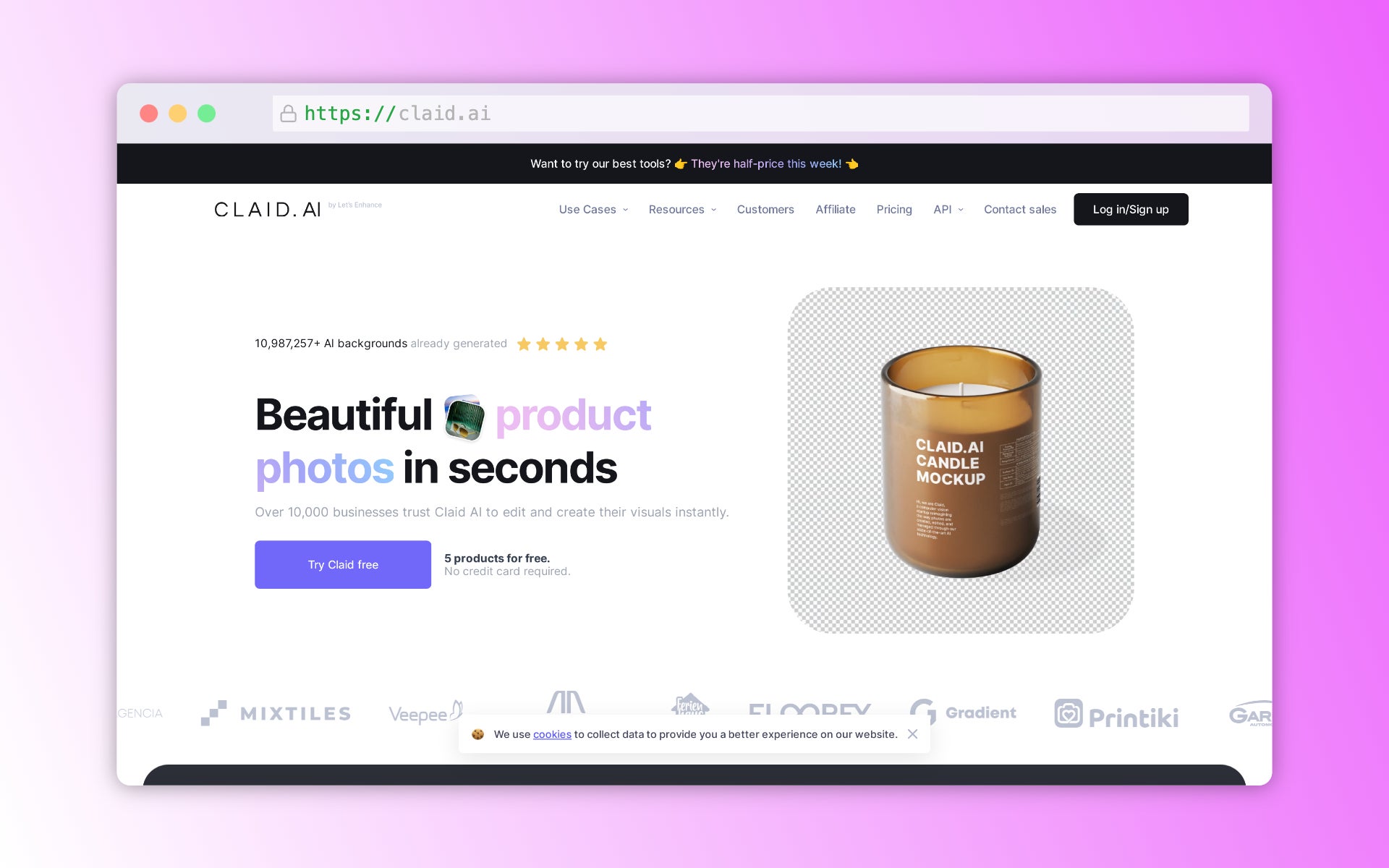
It works well for small Shopify stores and large eCommerce marketplaces alike. The web tool is user-friendly, and there's an API for automating workflows. It's a big time-saver for dealing with many product images.
It also recently introduced Custom AI. With just a few product photos, you can train a unique AI model that captures every detail of your item—perfect for generating natural-looking lifestyle shots or creative marketing visuals.
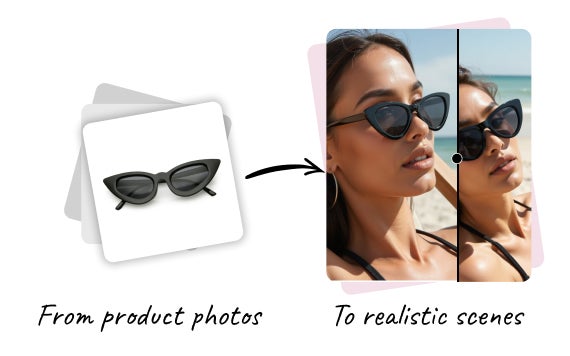
What it offers:
- AI for natural product placement
- Full editing toolkit: from enhancement to background removal and generation
- High-volume photo processing
- Product photography-specific technology
- Custom template uploads (Professional plan)
- AI eraser (Brush)
- Outpainting to different aspect ratios
Pricing:
- Free: 5 images uploads and 50 API credits
- Basic: From $19/month
- Professional: $49/month
- API: from $59 for one-time bundle of 1000 credits.
Pros:
- Specialized for product photography
- All-in-one suite (background removal, generation, enhancement, upscaling, color correction)
- Scalable API from self-serve to enterprise plans
- API for automation
- Custom template styles (Professional plan)
- Custom AI for ultra-realistic lifestyle shots and virtual models
Cons:
- Free trial limited to 5 uploads
- Lacks some features found in more general-purpose tool
- Limited mobile experience
Adobe Firefly
Adobe Firefly is the AI-focused addition to the Adobe suite, creating images including product photos. It integrates smoothly with Photoshop and Illustrator. The text-to-image feature is impressive – describe what you want, and it generates an image. It's great for creative professionals pushing boundaries, but it's not exclusively for product photography like some specialized tools.
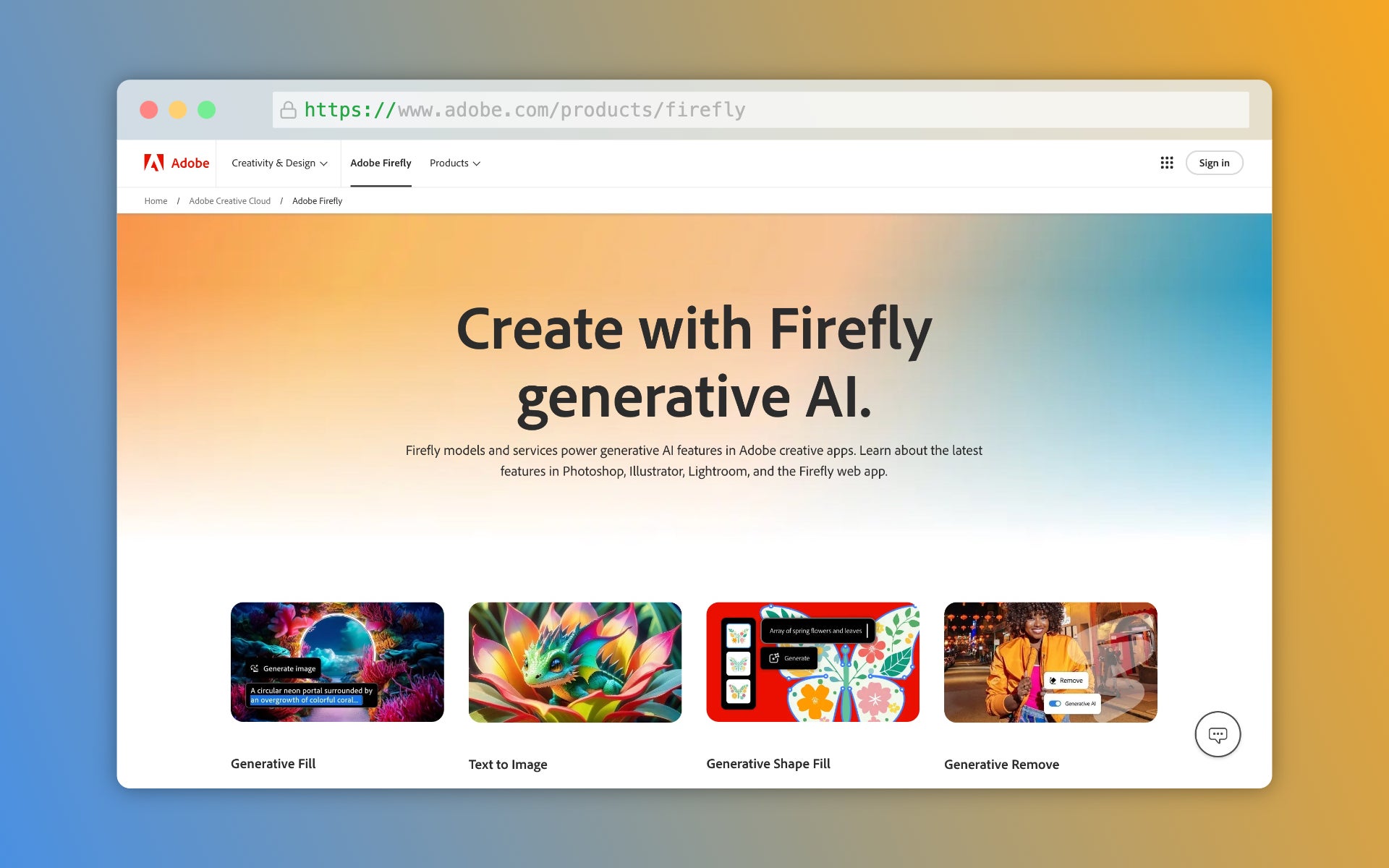
What it offers:
- Text-to-image generation
- Generative fill
- Text effects and recoloring
- Upcoming: text to template, image extension, text to brush/pattern/vector
- Compatible with other Adobe products like Photoshop
Pricing:
- Free: 20 credits/month (watermarked)
- Premium: $5/month (100 credits/month, no watermark)
Pros:
- Diverse feature set
- High-quality output
- Supports 100+ languages
- Low-cost premium plan
- Easy for beginners
- Fast image generation
- Displays multiple outputs per credit
Cons:
- Doesn't save prompted images
- No templates
- Not optimized for mobile
- Some features still in development
- Aggressive marketing and potential for price changes
Pebblely
Pebblely offers a user-friendly solution for creating professional-looking product shots without the need for advanced editing skills or high costs. It's particularly well-suited for small business owners, Etsy sellers, or anyone looking to enhance their product images quickly. The tool allows users to remove backgrounds, create multiple product versions in different settings, and even handle bulk image processing.

What it offers:
- AI-powered background removal and generation
- Custom scene creation with text prompts and reference images
- Resolution up to 2048x2048
- Bulk image processing
- Reusable custom backgrounds
- 40+ pre-made background themes
- Mobile-friendly interface
Pricing:
- Basic: $19/month (1000 images/month)
- Pro: $39/month (unlimited images)
Pros:
- User-friendly interface
- Consistent, high-quality outputs
- Mobile-friendly
Cons:
- Limited free plan
- Inconsistent results with reference images
- Poor performance with human models
- Limited template options compared to some competitors
Magic Studio
Magic Studio offers a suite of AI-powered tools for image editing, including Magic Eraser, Background Remover, AI Image Generator, Image Upscaler, Background Blur, and AI Art Generator. While these tools are useful for general photo editing, Magic Studio has also introduced a spin-off product specifically for eCommerce called "Product Photos."
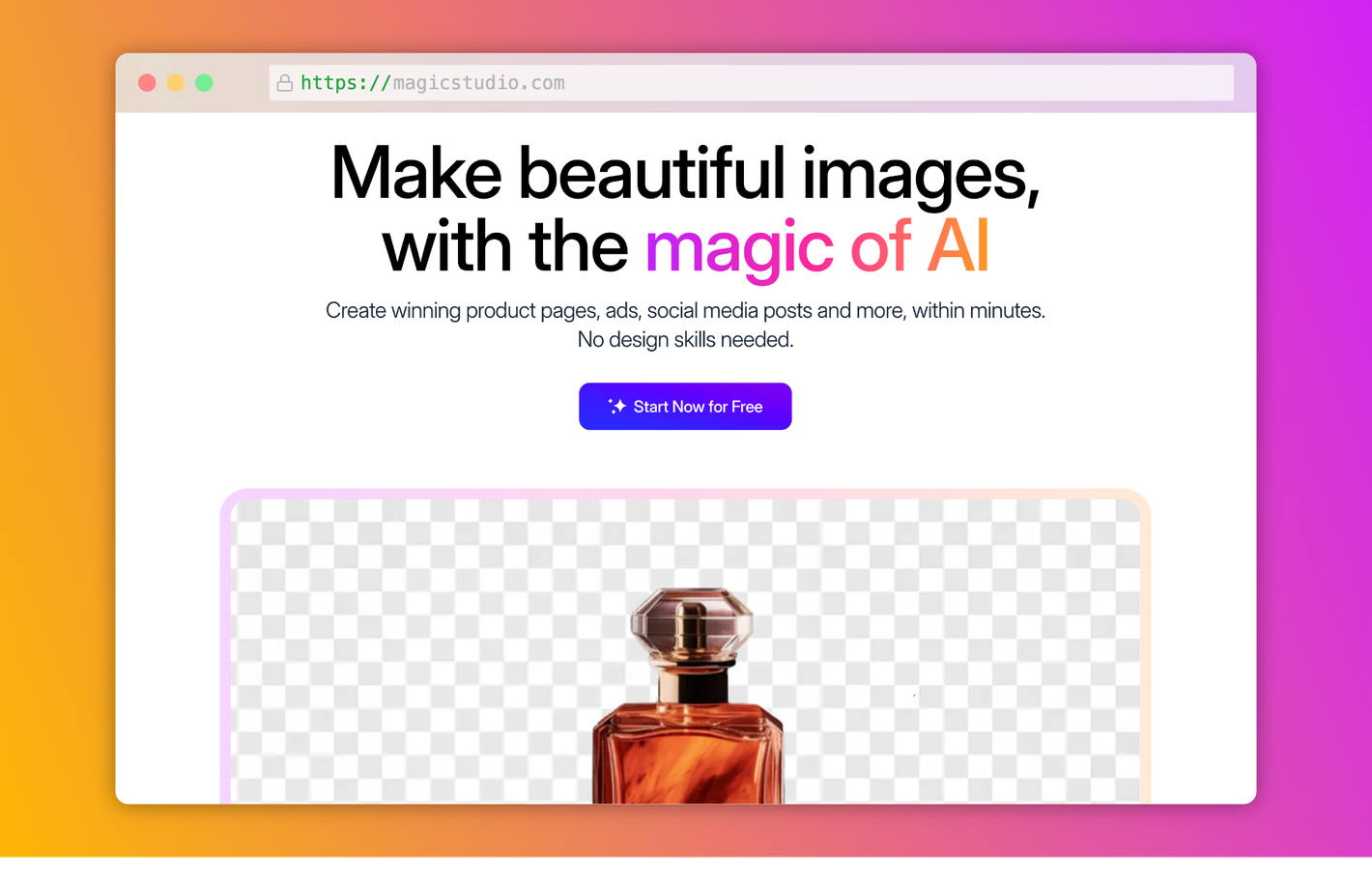
The main Magic Studio suite is good for enhancing product images for online stores or social media, offering a useful one-click enhancement option and various templates for marketing needs. However, its background generation feature (Magic Backgrounds) is limited to basic options such as colors and images, without using generative AI.
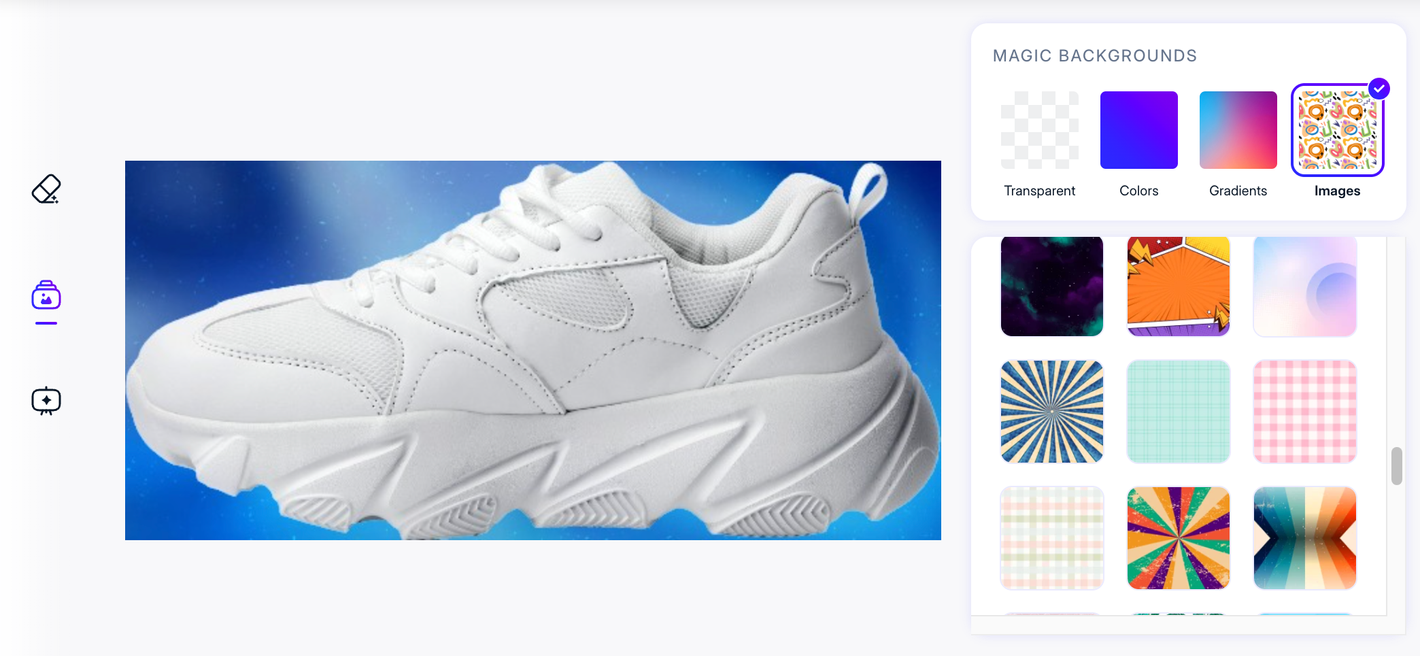
For more advanced AI-powered product photography, Magic Studio's "Product Photos" tool offers specialized features for eCommerce needs.
What it offers:
- AI-powered background generation for product images
- Two modes: Themes (pre-made templates) and Describe Scenes (text-based generation)
- Built-in background removal
- Integration with other Magic Studio tools
Pricing:
- Monthly: $49.99/month
- Yearly: $299.99/year
Note: The main Magic Studio suite has separate pricing at $14.99/month or $59.99/year.
Pros:
- Specialized tool for eCommerce product photos
- Integrates with other Magic Studio features
- Simple, user-friendly interface
- Realistic results in real-world-like scenes
Cons:
- Limited customization options
- Inconsistent product blending
- Occasional issues with product preservation
- Less effective for abstract or studio-like scenes
- Higher price point compared to some competitors
Photoroom
Photoroom is designed for online sellers needing to create many product listings efficiently. Its background removal tool is excellent, and it can process multiple images at once – helpful for large inventories. It integrates well with eCommerce platforms. However, it might offer fewer AI background generation features compared to some other tools.
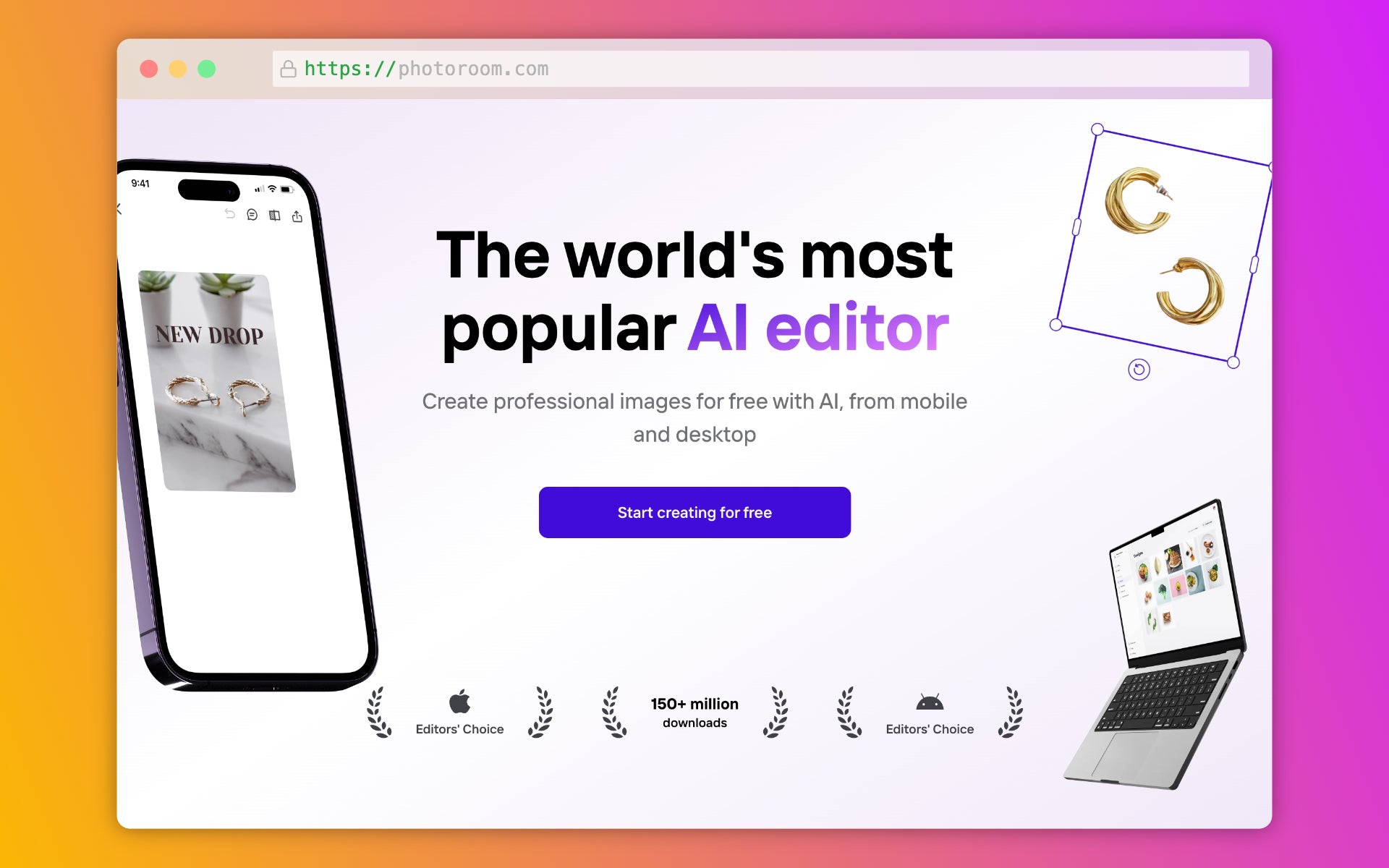
What it offers:
- Mobile app for on-the-go editing
- Background removal and replacement
- Social media size presets
- Assisted and manual background generation prompts
- Magic retouch for object removal
- Magic resize for easy exporting
Pricing:
- Monthly: $12.99/month
- Yearly: $89.99/year
Pros:
- Well-rated mobile app (4.9/5 on iOS)
- Quick processing
- Effective background removal
- Poster creation tools
- Comprehensive tutorials
- Optimized for various eCommerce platforms (Depop, Amazon, Etsy)
Cons:
- No free version (7-day trial only)
- Lacks generative fill
- No AI human models or elements
- Can't generate backgrounds for multiple products at once
Flair.ai
Flair.ai offers a user-friendly design studio experience. Its drag-and-drop interface lets you create professional-looking product photos without design expertise. It includes 3D object features to make products stand out and has useful collaboration tools for team projects. While great for creating eye-catching product images quickly, it may not have all the automated editing capabilities of some specialized eCommerce tools.
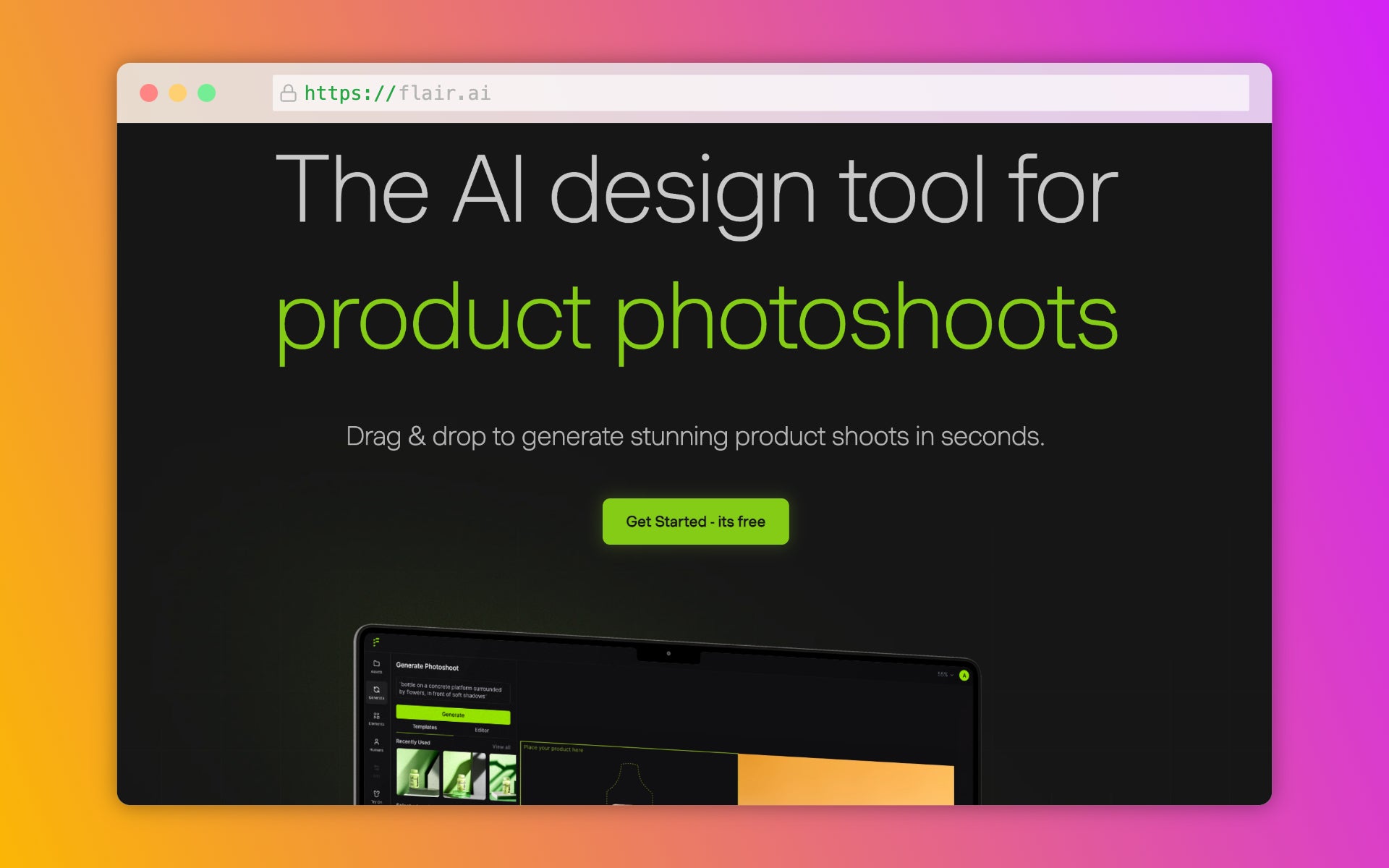
What it offers:
- Project-based organization
- Pre-built elements (platforms, fruits, flowers)
- Human model elements for product interaction
- Template quality and variety
- Dark mode UI
Pricing:
- Free: 100 credits/month, 10 projects/month
- Pro: $10/month (unlimited generation and projects)
- Enterprise: Custom pricing with extra features
Pros:
- Substantial free plan
- Affordable unlimited plan
- Team collaboration tools
- Quality templates
- Easy output management
- Generous free plan (100 credits/month)
Cons:
- Messy image management
- No background removal editing
- Templates can become repetitive
- Inconsistent human element quality
- Unclear image ownership terms
- Can't edit photos in bulk or bundle products together
Tool rankings: Generative AI for product backgrounds
Now that we've explored the top AI tools for product photography, let's dive into how they stack up against each other when it comes to generating product backgrounds. We've ranked these tools based on five key criteria: aesthetics, product blending, product preservation, customization options, and ease of use. Each criterion is scored out of 10, giving you a clear picture of where each tool shines and where it might fall short.

To provide a fair comparison, we've used the same product image and two different prompts across all tools*. This allows you to see how each tool interprets and executes the same creative brief.
*Note: For Pebblely, we used built-in themes.
The prompts we used are:
- "Professional photo of an object on wet concrete sidewalk in a city street, neon lights, Tokyo vibes, evening city skyline in the background"
- "Professional photo of an object on smooth corian platform, surrounded by smoke in a gradient from neon pink to bright blue, creating an ethereal and electrifying effect, striking and vivid product copy space"

As you can see, each tool interprets the prompts differently, showcasing their unique strengths and limitations. Let's take a look at how they performed with our second prompt.

Claid.ai
- Aesthetics: 10
- Product blending: 9
- Product preservation: 10
- Customization: 9
- Ease: 8
Claid AI excels in creating realistic, attractive product images. It seamlessly blends products into backgrounds while maintaining product details. The quality of the output scene is directly tied to the quality of the uploaded product image.
The tool offers two modes for background generation: from image reference and from text description.
Output quality largely depends on the user's prompt writing skills. To assist users, Claid provides helpful prompt examples and a GPT app.
The interface strikes a balance between simplicity and functionality. It offers enough customization options to satisfy most users, including creativity level adjustments and “quality vs. speed” slider.
The straightforward yet versatile interface makes Claid AI accessible to users with varying levels of expertise in product photography and AI tools.
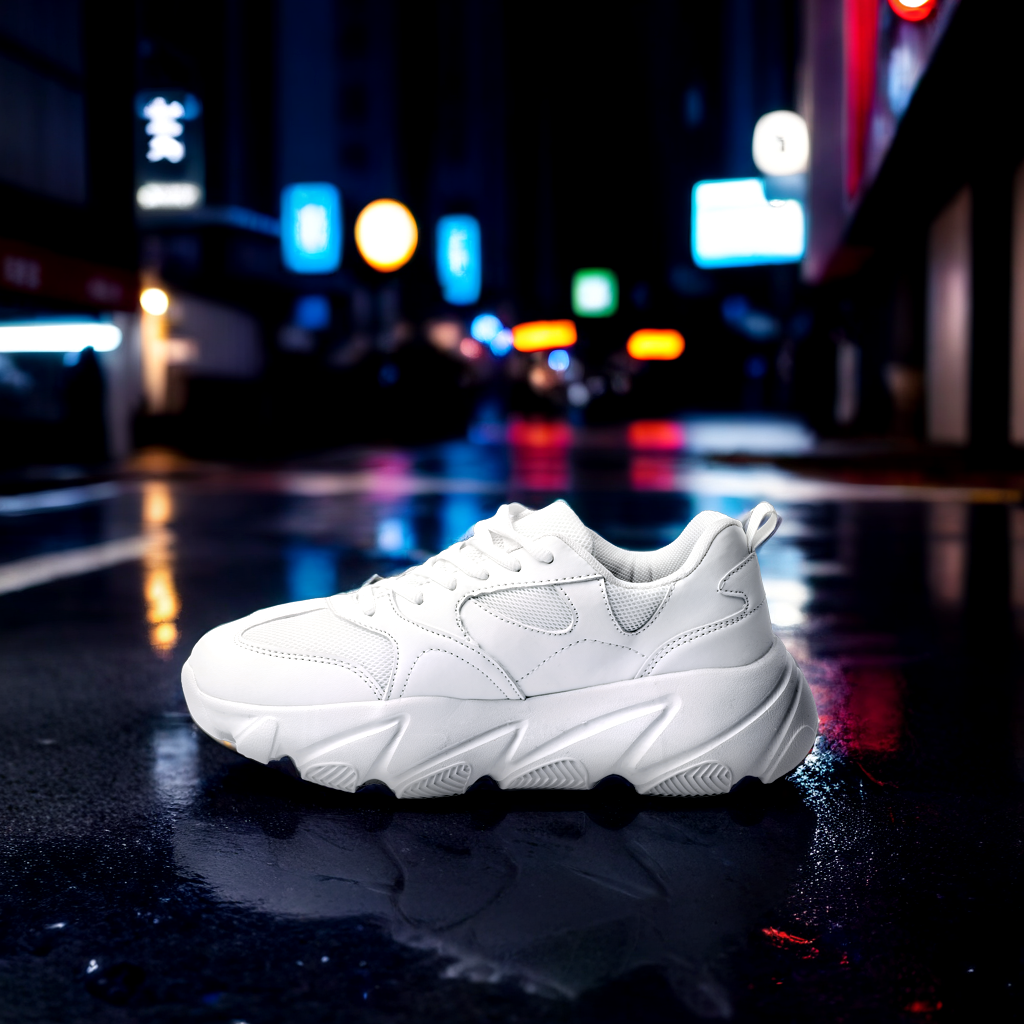

Adobe Firefly
- Aesthetics: 8
- Product blending: 3
- Product preservation: 5
- Customization: 9
- Ease: 2
Adobe Firefly creates visually appealing images but struggles with product-specific tasks. It offers extensive customization options but isn't designed for product photography.
The process is semi-manual, requiring users to select the foreground, refine the selection, and invert the mask. This approach is time-consuming and can lead to imperfect product blending.
In our tests, we encountered issues with product preservation, including AI-generated alterations to the original product (e.g., adding extra fabric to a sneaker).
The complex interface and workflow make it challenging for new users, especially those unfamiliar with Adobe products. While Firefly excels in creative tasks, it may not be the best choice for efficient, accurate product photo generation.


Pebblely
- Aesthetics: 6
- Product blending: 7
- Product preservation: 9
- Customization: 7
- Ease: 9
Pebblely offers a user-friendly approach to AI product photography. While its generated images are photorealistic, they may not be as visually striking as those from some competitors. Product blending is generally good, with the tool capable of generating shadows and reflections around products, though this feature isn't consistent across all generations. Where Pebblely shines is in product preservation, maintaining excellent detail without distortions or unwanted additions. The tool provides basic customization options, including pre-made themes and custom generation with prompt controls and reference image uploads. Users can also choose between high-quality ("Generate+") and higher-speed generation. Pebblely's streamlined UI, focused on background generation, makes it exceptionally easy to use. Its template gallery helps overcome creative blocks and provides inspiration, making it an excellent choice for users who prioritize simplicity and quick results.
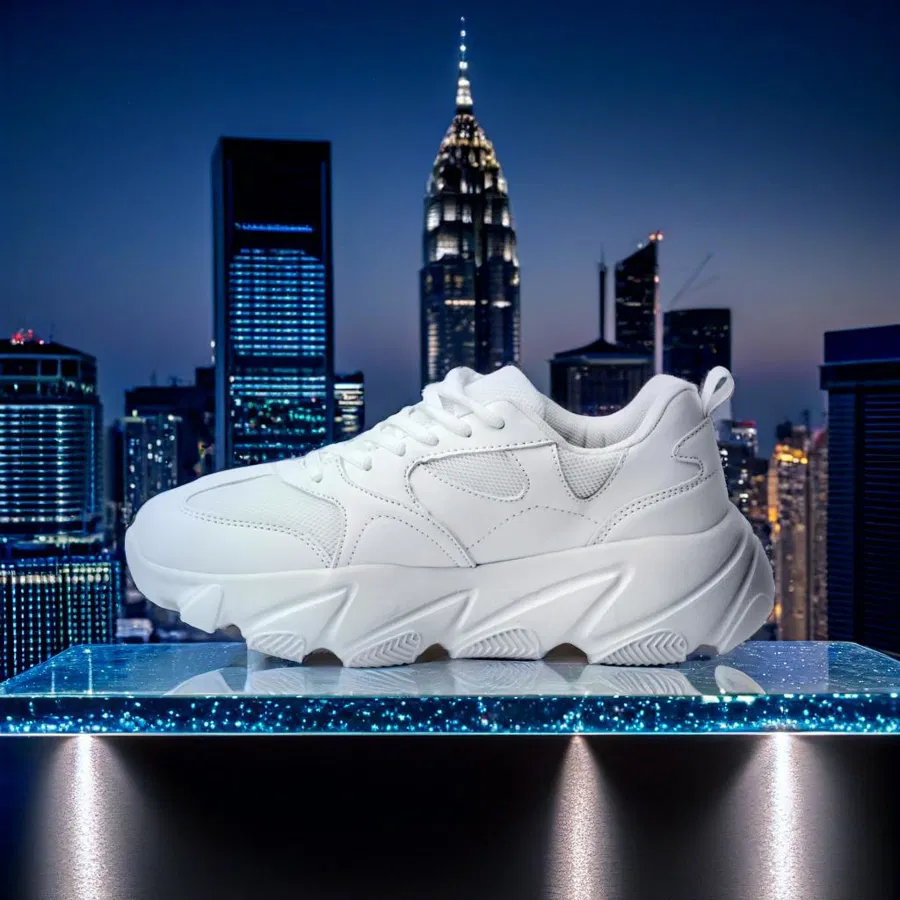
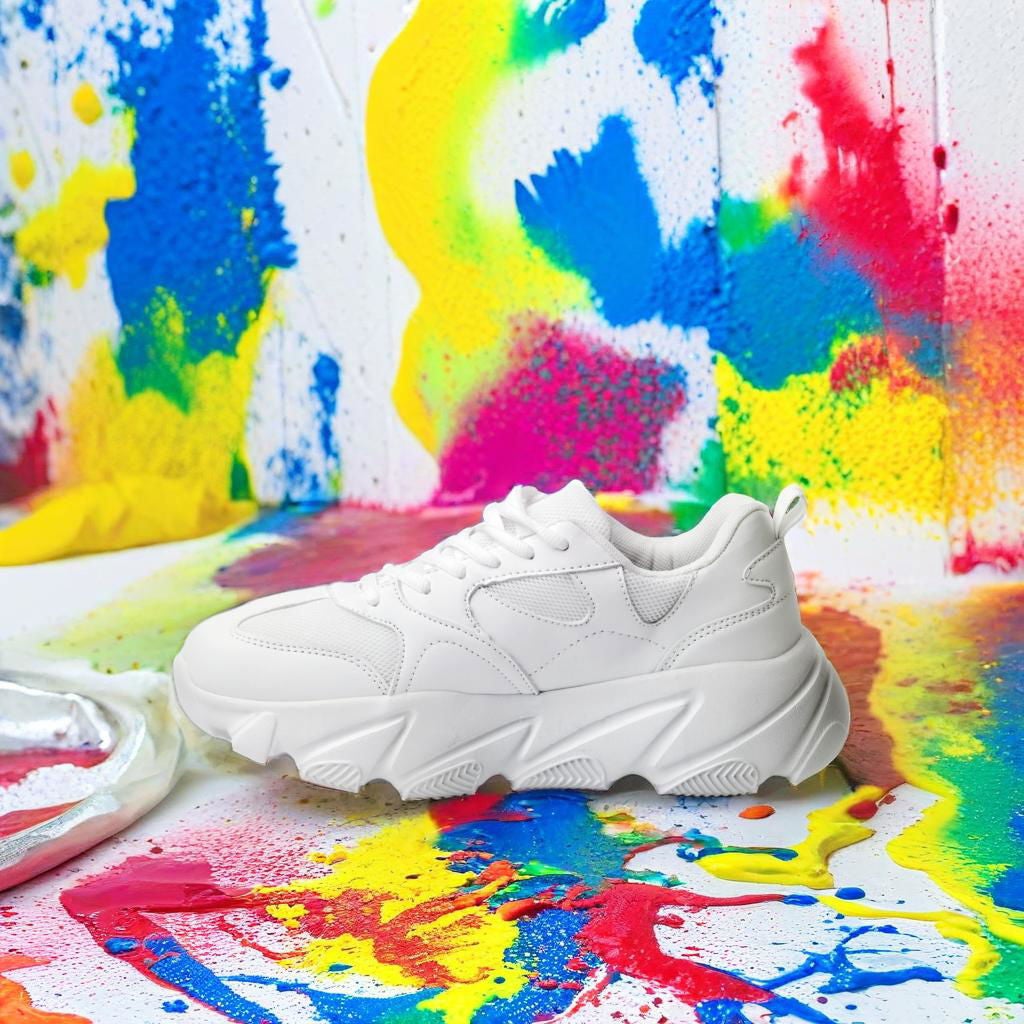
Magic Studio
- Aesthetics: 7
- Product blending: 7
- Product preservation: 5
- Customization: 3
- Ease: 9
Magic Studio's "Product Photos" tool offers a significant improvement over the basic Magic Backgrounds feature in the main suite. It uses AI to generate backgrounds for product images, with varying degrees of success.
The tool excels in creating realistic, real-world-like scenes, making it suitable for products that benefit from contextual settings. However, it's less effective for studio-like or abstract backgrounds. Also, the AI doesn't always follow prompts as accurately as some top-tier competitors.
Product blending can be impressive when it works well, creating realistic integrations. However, the results aren't always consistent, which can be frustrating for users needing complete review-free automation.
A notable issue is with product preservation. The AI sometimes adds extra elements around the product, which can range from barely noticeable to quite visible "overgrowth." This could be problematic for users who need their products to remain unaltered.
Customization options are limited, with users restricted to two main modes: pre-made themes and text-based generation. There's little room for fine-tuning beyond these options, which may not satisfy more demanding users.
However, the tool shines in ease of use. Its straightforward interface, similar to other user-friendly tools like Pebblely, makes it accessible even to those new to AI-powered image generation. The library of pre-made themes and pre-generated prompts further simplifies the process, although the lack of assistance in prompt writing could be a drawback for some users.
Overall, Magic Studio's "Product Photos" tool offers a solid option for eCommerce businesses looking for AI-generated product images, especially those prioritizing ease of use and realistic scenes. However, users requiring more consistent results, better product preservation, or extensive customization might find it somewhat limiting.


Photoroom
- Aesthetics: 7
- Product blending: 9
- Product preservation: 10
- Customization: 7
- Ease: 9
Photoroom excels in creating product photos with a good balance of quality and ease of use. It shines in product preservation, maintaining perfect detail without unwanted alterations. The tool's product blending is impressive, featuring realistic reflections and shadows that integrate products seamlessly into new backgrounds.
Aesthetically, Photoroom performs well, especially with abstract backgrounds. However, photorealistic scenes like city streets can sometimes look artificial. While it generally adheres to prompts effectively, there's room for improvement in accuracy. Customization options are solid, offering pre-made themes, direct Unsplash image imports, and custom background creation from prompts. The user-friendly interface makes the entire process straightforward, even for beginners.


Flair.ai
- Aesthetics: 8
- Product blending: 8
- Product preservation: 10
- Customization: 10
- Ease: 6
Flair.ai stands out with its high-quality output and extensive customization options. Aesthetically, it outperforms many competitors, though it falls slightly short of top-tier solutions like Claid. The tool excels in product preservation, maintaining perfect detail without introducing artifacts.
Product blending is impressive, with Flair.ai adding natural shadows and reflections in most cases, though not consistently.
Its unique project-based workflow sets it apart, offering a Figma-like canvas for editing. This approach, combined with a library of props and human models, provides unparalleled customization options.
However, this advanced feature set comes with a steeper learning curve. While powerful, Flair.ai may require more time to master compared to simpler tools.
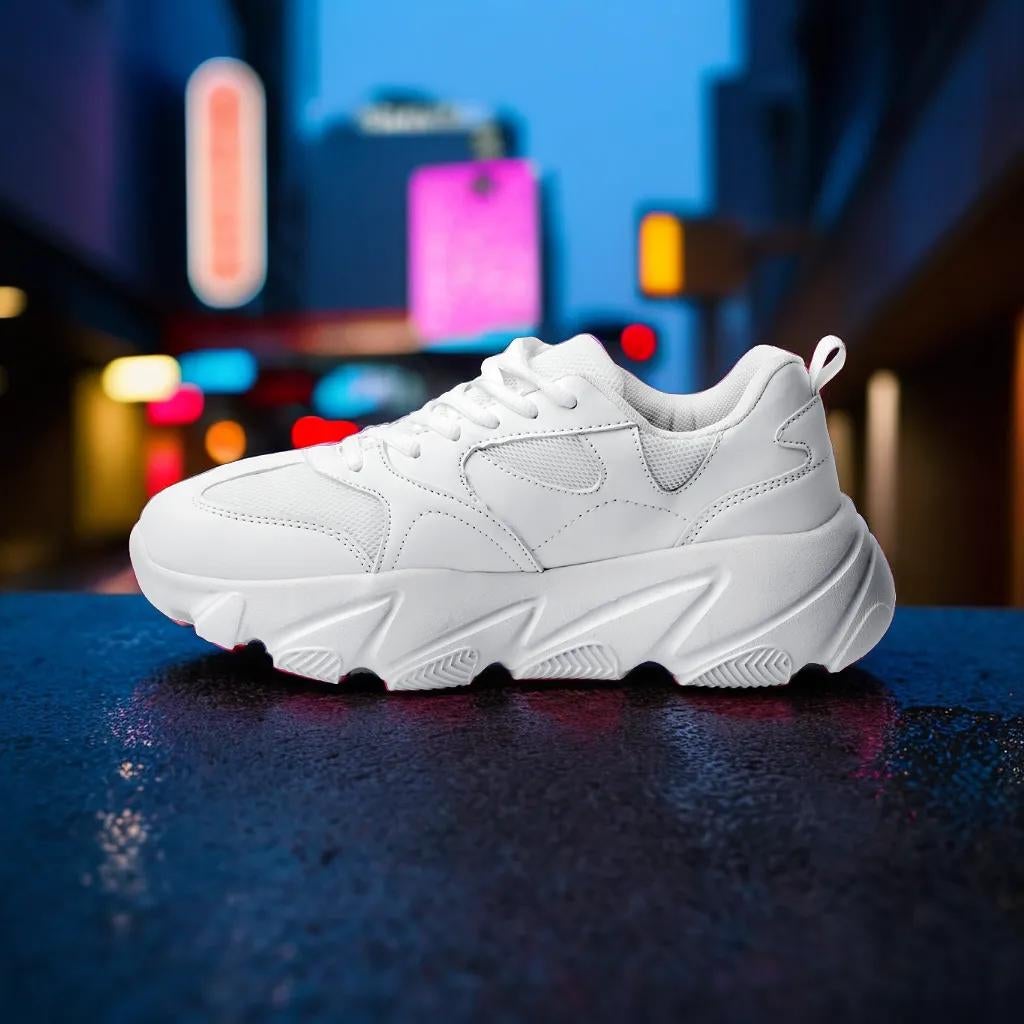

Additional tools worth mentioning
- LetsEnhance.io: Focuses on upscaling, text-to-image generation and background removal.
- Wondershare VirtuLook: Offers 4K lifestyle images with custom text-to-image prompts.
- Pixelcut: Provides thousands of templates and a batch editor for free.
- CreatorKit: Features Shopify integration and branded video creation from AI-generated photos.
- Vue.ai: Specializes in on-model product photos with customizable backgrounds and poses.
- Zeg AI: Creates 3D product images and videos with multiple models, props, and scenes.
- Remove.bg: Quickly removes backgrounds in 5 seconds, compatible with eCommerce platforms.
- Designify: Offers customization with watermarks, logos, and shadow addition.
FAQ
What are the benefits of using AI for product pictures?
AI is making product photography faster and easier. It automates tasks that used to take hours, like cutting out products from backgrounds or fixing lighting. AI can also generate scenes showing products in use, add new backgrounds, and expand images. This helps businesses make more product photos quickly and try out different looks without spending too much time or money.

Which AI tool can help me put fashion items on virtual models?
Claid’s Custom AI is tailor-made for this. Upload a few photos of your clothing or accessory, and the AI can generate photos showing your products on lifelike virtual models. This is perfect for fashion eCommerce, social media campaigns, and marketing materials.
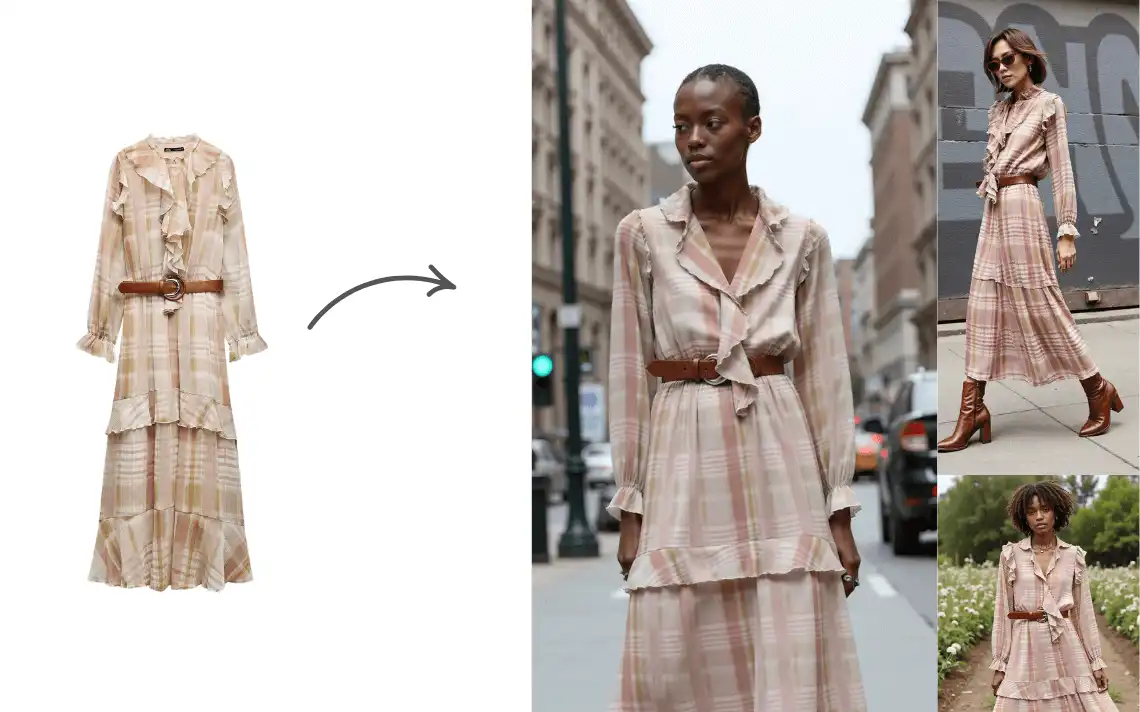
What to look for in AI product photography tools?
When picking an AI tool for your product photos, keep an eye out for these key features:
- Product preservation: From labels to textures - the tool should keep all the little details that make your product unique.
- Background removal as well as other standardization options like padding control.
- Background generation: Creating pro-quality images for listings and ads.
- Image enhancement: AI-powered upscaling, decompression, and color correction.
- Easy-to-use interface: You shouldn't need a tech degree to figure it out.
- Extra features: Some tools offer eCommerce-specific features like shadow generation, adding text overlays, etc.
If you're running a bigger operation, you'll also want to check for automation features: API, batch processing and integration with eCommerce platforms. These extras can save you tons of time and hassle as your business grows.
How to choose the right AI tool for eCommerce images?
Consider these factors when selecting an AI product photography tool:
- Your budget and business size
- Needed features (background removal, image enhancement, automation)
- Scalability requirements
- Ease of use
- Integration with your current systems
- Specific industry needs (e.g., fashion, electronics, food)
- Output quality and consistency
- Speed of image generation
- Available support and resources
Try free trials when available to test the tools in your workflow. Consider the long-term value and potential for the tool to grow with your business needs.
How to use AI for product photography?
To get the most from AI product photography tools:
- Keep your brand's visual style consistent
- Combine AI tools with human creativity for best results
- Regularly check and adjust AI outputs for quality
- Stay informed about new features in your chosen tool
- Experiment with different prompts and settings to achieve desired results
- Use AI-generated images as a starting point, then refine with manual edits if needed
- Consider the ethical implications and be transparent about AI usage if required in your industry
AI tools for product photography can up your game with online product images, saving you time and money. By carefully looking at what each tool offers and how much it costs, you can find the right fit for your needs. Don't be afraid to try out different options to find what works best for you. And remember, AI is always improving, so keep an eye out for new tools and features that could make your product photography even better.

Claid.ai
February 3, 2025